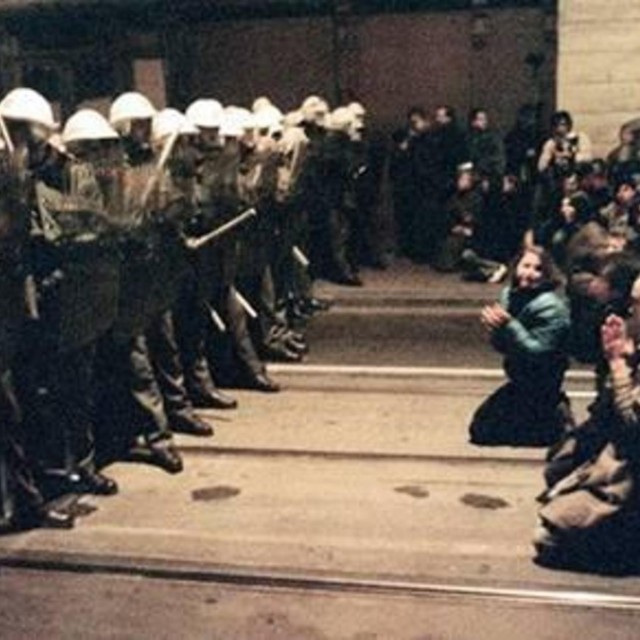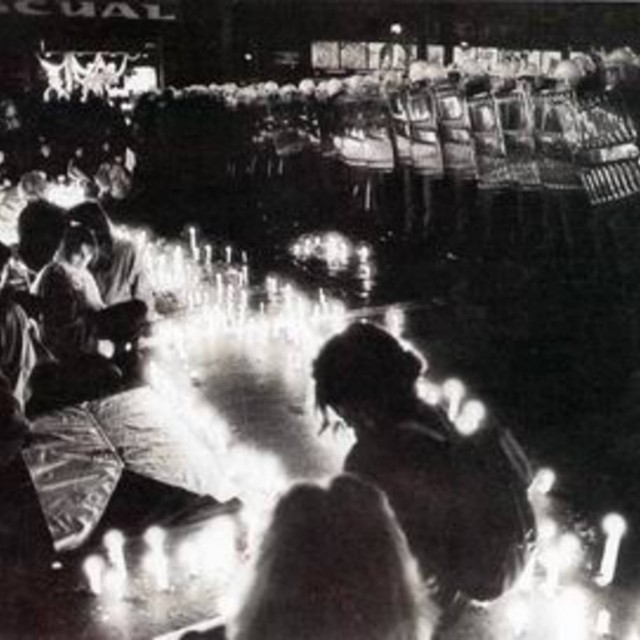Euphoria? No, trauma
Maybe you know that photograph from Národní Street, 17 November 1989 – the impenetrable wall of police anti-demonstration squad, facing a crowd of protesters just a few metres away, and a girl wearing a blue down feather jacket sitting between the two camps. The girl was one sixteen year-old Magdaléna Vovsová (married Rajčanová), a high school student. “I thought, ‘How can I protect myself?’”, she remembers now. “I stayed on the ground thinking that they couldn’t make me move. But when you see those boots and shields … that will make you move quite easily.” Hundreds of protesters who had no chance to exit Národní Street were trapped. Eventually, a friend pulled Magdaléna by the hand back into the crowd, mercilessly compressed by the police squads from both sides. “The experience was definitely more traumatic than euphoric. Suddenly, people started panicking, the pressure around grew terribly.” The only way to escape was the arcades near Mikulandská Street where the infamous Red Berets were busy. “You had to push your way through there, or be carried by the crowd. Actually, I was more pulled there by my friend; he led me out through the aisle and managed to protect me from getting hit. But they dislocated his hand, the one that he held the flag in.” Magdaléna was lucky in the end. She escaped uninjured from the arcades where a memorial plaque of the 1989 police raid on Národní Street can be found today.
Hodnocení
Hodnotilo 0 lidí
Routes
Comments
No comments yet.



